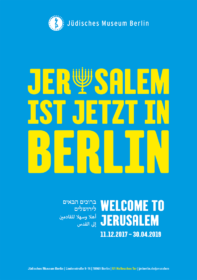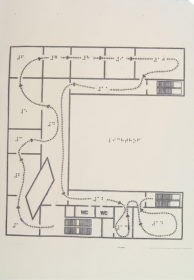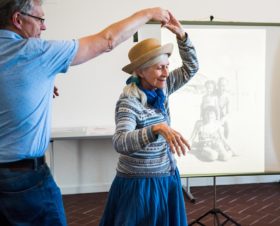How school children react to the tour through the exhibition Welcome to Jerusalem. A conversation with Marc Wrasse

Campaign for the exhibition Welcome to Jerusalem; Jewish Museum Berlin, designed by: Preuss und Preuss GmbH
You’ve worked for the Jewish Museum Berlin for many years, as well as for other museums. What makes this exhibition special?
The Jewish Museum Berlin has a wide variety of visitors—the audience here is nearly as diverse as the modern world itself. If you visit the museum or work here, you can have a lot of different experiences, including in experimental exhibitions such as Obedience (more information about the exhibition on our website). Due to their social and political significance, I always find encounters during tours through Welcome to Jerusalem (more on our website) to be something special. Muslim students in particular—and that label encompasses much variety, ranging from the third-generation Turkish people in Germany to Syrian war refugees with their anti-Israeli background—are highly attentive in this exhibition.
Why is that, in your opinion?
→ continue reading
A tour for the blind and vision impaired through the exhibition Welcome to Jerusalem at the Jewish Museum Berlin

This tactile model gives an overview of all rooms of the exhibition and explains the way through the exhibition. This tactile model was created by Jonas Hauer like the other models shown in this blog post; Jewish Museum Berlin, photo: Birgit Maurer-Porat
A “museum for everyone,” that is, accessible—that’s what we want to be and to become. The path to this goal is long and sometimes difficult, and it’s not always easy to determine the right direction. New approaches have to be developed, tested, and sometimes rejected. In addition, a wide variety of factors can make access difficult or even impossible for an individual. Sometimes language represents a barrier, sometimes architecture, sometimes the way things are presented, sometimes the topic or perspective, just to name a few.
This makes feedback from our visitors all the more important to us. Their criticism helps us to improve our existing offerings and to make them more accessible. Their praise motivates us to continue on the right path, even against the resistance that we sometimes unfortunately encounter. For this reason, among others, we were very pleased to receive permission to republish the following piece by Gerald Pirner, who was able to open new perspectives for many onto the exhibition Welcome to Jerusalem…
After the entry checkpoint comes the light well. It’s not just the seeing who experience light: an expanse opens acoustically, as if you were stepping out into the open, and yet remained in a closed space. → continue reading
A new tour is on offer at the Jewish museum for people with dementia

Dancing to hit songs from 1951. People with dementia still remember old songs; Jewish Museum Berlin, photo: Jule Roehr
Colleagues and friends reacted with shock and surprise, but also great interest when I told them about my project: as a research trainee in the education department, I was given the task of developing programming for Jewish Museum visitors with dementia.
I was very excited once the project concept had been finalized and we were ready to test it. We invited a group from an eldercare center. → continue reading


